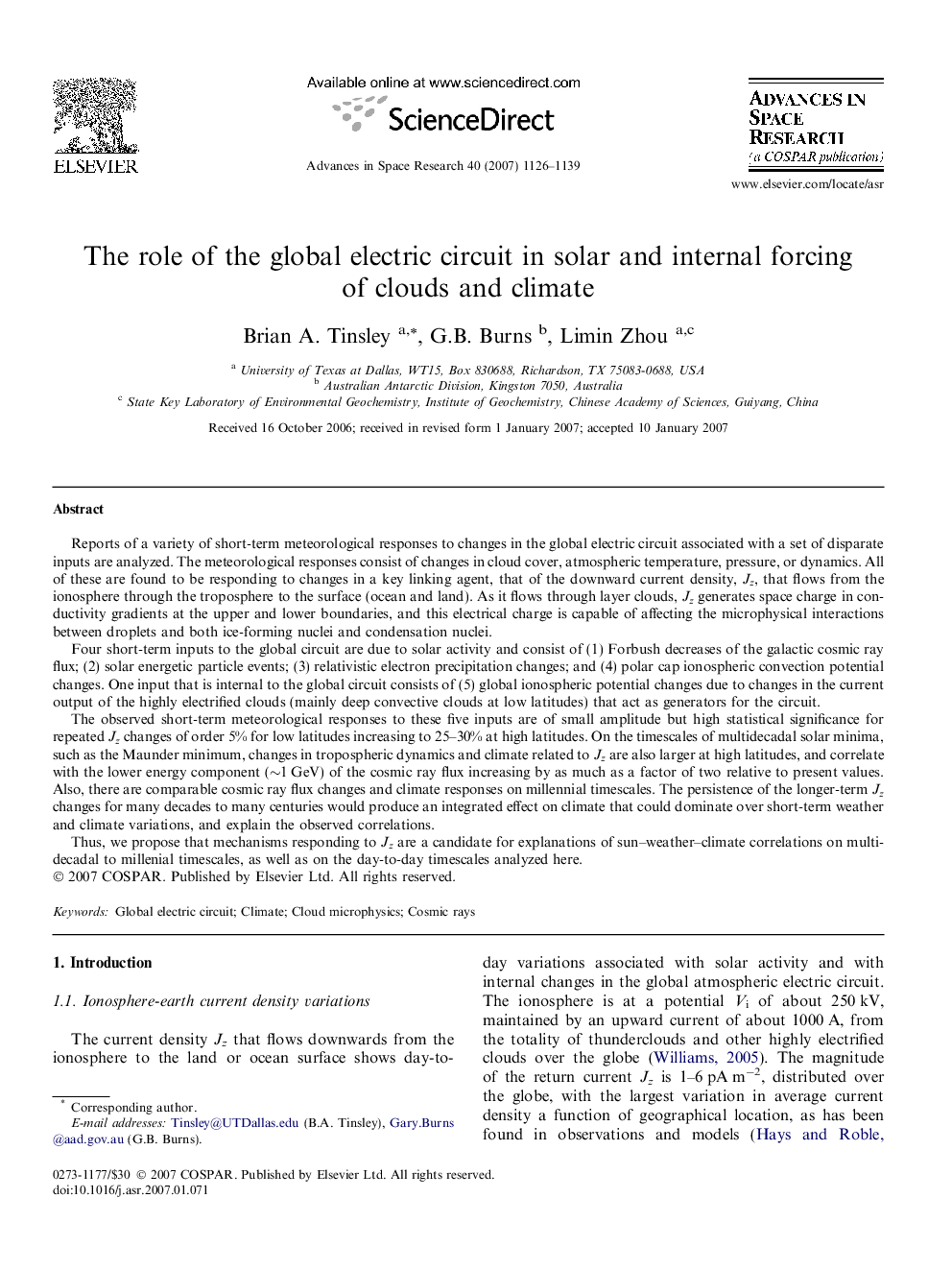| کد مقاله | کد نشریه | سال انتشار | مقاله انگلیسی | نسخه تمام متن |
|---|---|---|---|---|
| 1767055 | 1020174 | 2007 | 14 صفحه PDF | دانلود رایگان |

Reports of a variety of short-term meteorological responses to changes in the global electric circuit associated with a set of disparate inputs are analyzed. The meteorological responses consist of changes in cloud cover, atmospheric temperature, pressure, or dynamics. All of these are found to be responding to changes in a key linking agent, that of the downward current density, Jz, that flows from the ionosphere through the troposphere to the surface (ocean and land). As it flows through layer clouds, Jz generates space charge in conductivity gradients at the upper and lower boundaries, and this electrical charge is capable of affecting the microphysical interactions between droplets and both ice-forming nuclei and condensation nuclei.Four short-term inputs to the global circuit are due to solar activity and consist of (1) Forbush decreases of the galactic cosmic ray flux; (2) solar energetic particle events; (3) relativistic electron precipitation changes; and (4) polar cap ionospheric convection potential changes. One input that is internal to the global circuit consists of (5) global ionospheric potential changes due to changes in the current output of the highly electrified clouds (mainly deep convective clouds at low latitudes) that act as generators for the circuit.The observed short-term meteorological responses to these five inputs are of small amplitude but high statistical significance for repeated Jz changes of order 5% for low latitudes increasing to 25–30% at high latitudes. On the timescales of multidecadal solar minima, such as the Maunder minimum, changes in tropospheric dynamics and climate related to Jz are also larger at high latitudes, and correlate with the lower energy component (∼1 GeV) of the cosmic ray flux increasing by as much as a factor of two relative to present values. Also, there are comparable cosmic ray flux changes and climate responses on millennial timescales. The persistence of the longer-term Jz changes for many decades to many centuries would produce an integrated effect on climate that could dominate over short-term weather and climate variations, and explain the observed correlations.Thus, we propose that mechanisms responding to Jz are a candidate for explanations of sun–weather–climate correlations on multidecadal to millenial timescales, as well as on the day-to-day timescales analyzed here.
Journal: Advances in Space Research - Volume 40, Issue 7, 2007, Pages 1126–1139